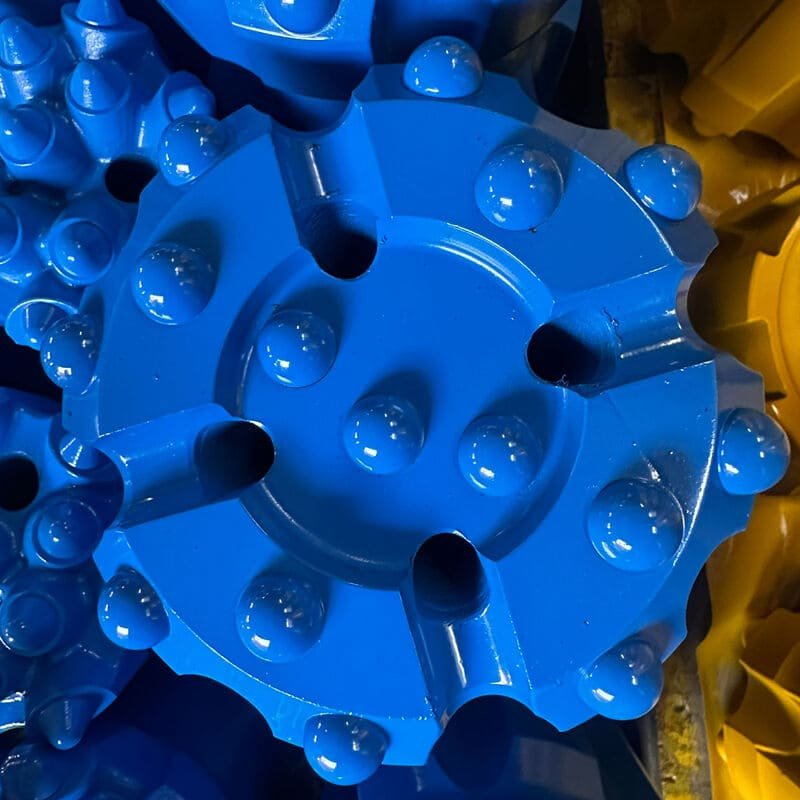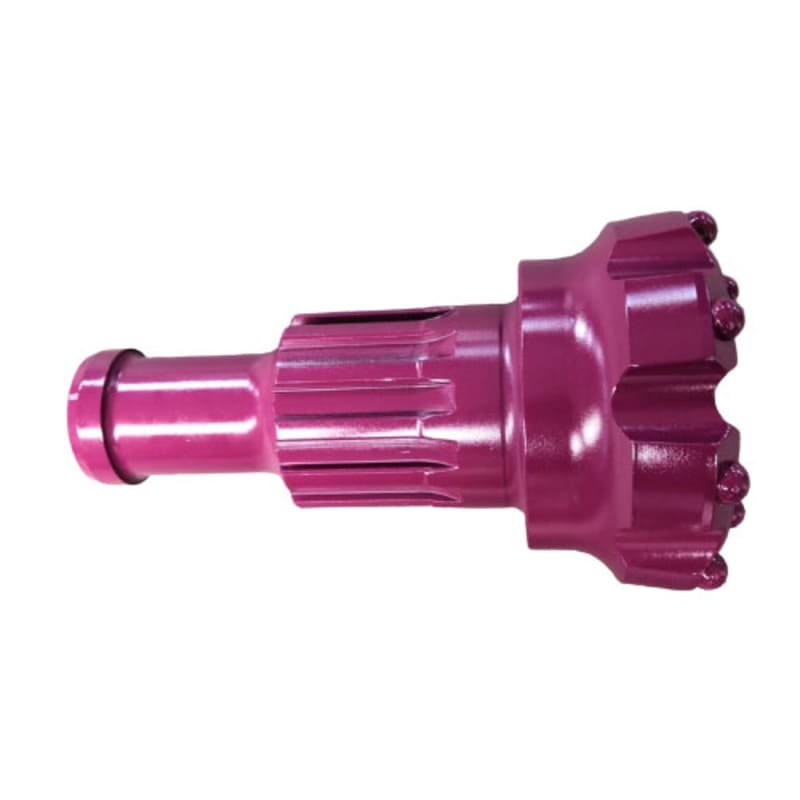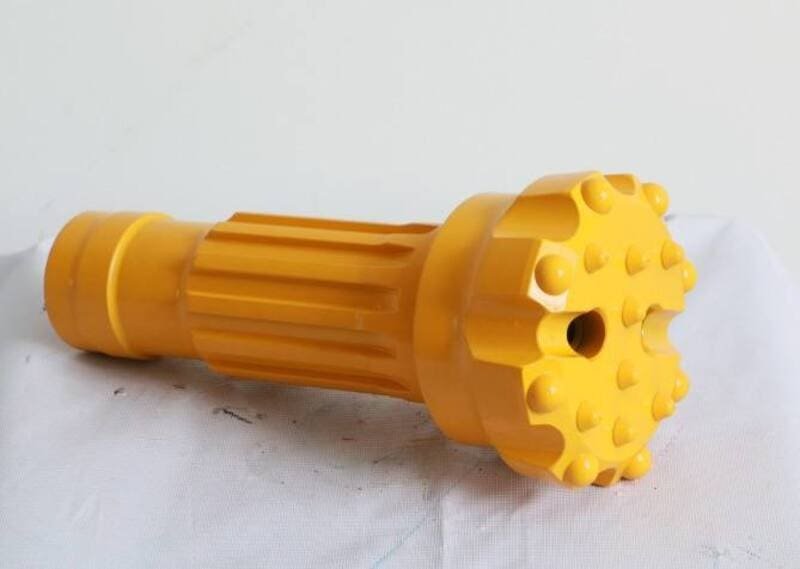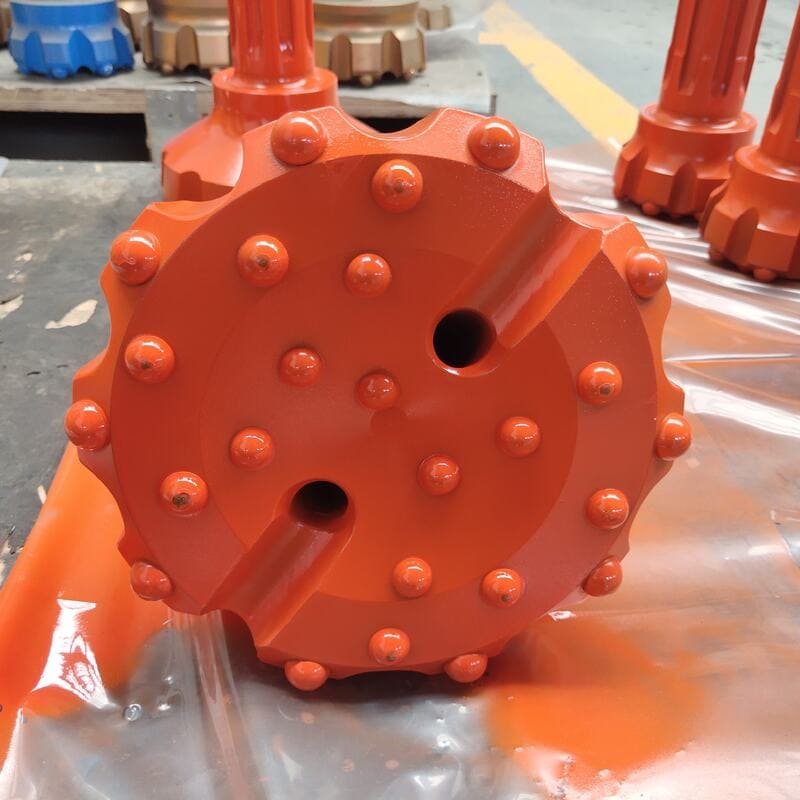Selecting the correct diameter for a DTH drill bit probably changes everything in your drilling projects.
DTH drill bits vary in size from 2 inches to over 42 inches. People use them in many fields like mining, construction and water well drilling. These tools fit different needs.
I first explored drilling and found many sizes of DTH drill bits. They come in various sizes. Different tasks like mining or building a water well need specific sizes. Each size is important for its job. Knowing the different diameters helps you find the right tool. Let’s look at the details.
DTH drill bits range from 2 inches to 42 inches in diameter.True
DTH drill bits are available in sizes from 2 inches to 42 inches.
Sandvik offers DTH drill bits up to 36 inches in diameter.False
Sandvik provides DTH drill bits up to approximately 10 inches.
How Do You Choose the Right Diameter for Your Drilling Project?
Have you ever felt confused about choosing the right drill bit for a project? Let's go through this step by step!
When you choose the correct drill bit diameter, think about the material, the hole size you want and the drill's capacity. Align these factors for efficient drilling. This alignment helps with precision.

Understanding Material Compatibility
I remember trying to hang a picture frame once. The drill bit wouldn’t go through. I learned that soft things like wood or drywall need smaller bits. A concrete wall needs a stronger bit. Matching the drill bit to the material is crucial. It prevents trips to the hardware store and protects your surface. Checking a material compatibility guide1 helps a lot.
Assessing Project Requirements
When I installed kitchen cabinets, I saw how important matching the drill bit to the anchor size was. If it’s too loose, the cabinets wobble. A fit that is too tight risks breaking things. It could lead to incomplete work. A project-specific chart2 is really useful in getting the job done right.
Evaluating Drill Capacity
I learned a lesson when using a large bit with a small drill. It slowed me down, and the drill became very hot. Small drills are not for big bits, and using a strong drill with small bits can break them. Look at your drill’s manual for matches by consulting manufacturer guidelines3. It’s worth the time.
Consulting Experts and Resources
Sometimes, after much research, I still felt unsure. Talking to an expert helps a lot as pros share insights that guides might not cover. Online forums are full of stories and advice; they are like a support group of experts where you have a community at your fingertips! Consider visiting expert advice platforms4 for additional guidance.
DTH bits are available up to 42 inches in diameter.True
Drill King offers DTH drill bits up to 42 inches (1067 mm).
All DTH bits are over 1 meter in length.False
Standard lengths can be less than 1 meter for smaller diameter bits.
What Are the Differences Between Small, Medium, and Large Diameter Bits?
Have you ever stood in front of a project and questioned whether you chose the correct drill bit? I know that feeling well. Let us explore how selecting small, medium or large diameter bits really changes everything.
Small diameter bits work well for precise tasks in narrow areas. Medium bits provide both strength and versatility. Large bits handle tough jobs that need more power and stability. They are really great for heavy-duty tasks.

Small Diameter Bits: Precision and Control
Small diameter bits, typically ranging from 2 to 4 inches, are perfect for tasks that require precision and control. When I tried woodworking, I quickly saw the charm of these bits. They work like fine brushes for drilling and are ideal for detailed woodworking5 or intricate metalwork. If a project has many details or tight spots, these bits are perfect.
Due to their size, they offer less resistance and require less power to operate, making them ideal for handheld drills or smaller machinery. Their lightweight nature allows for more maneuverability, which is critical in tasks demanding fine adjustments. However, small bits may not withstand the same level of stress as larger bits; never push them too hard—a lesson I learned through trial and error.
Medium Diameter Bits: Versatility and Strength
Medium diameter bits span from 4 to 12 inches and strike a balance between versatility and strength. These bits are like a multi-tool for drilling, useful for many tasks from standard construction tasks6 to mid-sized jobs.
I recall a home renovation where these bits helped me significantly. They cut through tough materials without needing special gear, saving time and effort. Their moderate size provides the ability to perform efficiently without overly specialized equipment—ideal in industries like mining and general construction where adaptability is key.
Large Diameter Bits: Power and Stability
For serious work like building decks or drilling wells, large diameter bits do the job. Ranging from 12 inches up to 36 inches or more, they are essential for heavy-duty operations such as large-scale construction projects or geological explorations7.
These bits need strong drills and skill due to their significant power requirements but offer substantial resistance to deflection. Watching them cut through dense stuff feels like slicing butter! Their stability under pressure is impressive; however, their size and weight can limit portability.
In summary, choosing the right bit size saves effort and helps achieve good results. Understanding the differences between small, medium, and large diameter bits is crucial for selecting the right tool for your specific needs. Each size offers unique advantages that cater to various applications—consider your project needs before you start.
DTH drill bits can be up to 48 inches in diameter.False
The maximum diameter mentioned is 42 inches, not 48 inches.
Standard DTH bit lengths range from 350 mm to over 1 meter.True
Standard lengths for smaller bits range from 350 mm to over 1 meter.
Which Manufacturers Offer the Widest Range of DTH Drill Bit Sizes?
Do you sometimes feel confused by the many DTH drill bit options? Let's explore the top manufacturers to find the perfect one for your needs.
Drill King, Sandvik, Hole Products and Mincon produce a variety of DTH drill bit sizes. Drill King offers the widest range of sizes. Their sizes go from 2-3/4 inches to 42 inches. These meet all drilling needs. Contact each company for your specific project needs. Custom options might be available.

Drill King: Leading the Pack
Drill King offers a very wide selection of DTH drill bit sizes, ranging from a small 2-3/4 inches to a huge 42 inches. This extensive range allows them to cater to both small-scale operations and major industrial projects. I remember a hard project I once worked on where precision and power were very important. Drill King's variety let me switch easily between tasks, moving from narrow mining shafts to big construction sites with ease.
Their customization options8 saved me a lot of time and effort, especially when I needed special setups for unique jobs.
Sandvik: Precision and Quality
Sandvik does not offer the largest range, but their bits are very precise. They provide sizes from 95 mm (about 4 inches) to 254 mm (about 10 inches), making them ideal for projects where precision matters most. Each millimeter counts, and during challenging projects, Sandvik worked perfectly every time under tough conditions.
Explore their product catalog9 which showcases their strong focus on quality and precision.
Hole Products: Versatility at Its Best
Hole Products offers sizes from 2 inches to 36 inches, providing tools that are versatile enough for various drilling applications. This versatility really helped me on many projects where adaptability was key. Their focus on innovation keeps me ahead in terms of drilling efficiency, whether I need quick movements or strong power.
Discover their innovative designs10, which are a crucial part of my tools.
Mincon: Bridging the Gap
Mincon covers sizes from 3 inches to 12 inches and is known for its reliable performance in tough environments. These bits are renowned for their strength and never fail even in harsh conditions. During unexpected challenges, I trusted Mincon; the bits did not break.
Their focus on durability11 is vital for those who value reliability as much as I do.
Drill King offers DTH bits up to 42 inches in diameter.True
Drill King provides sizes ranging from 2-3/4 inches to 42 inches.
Sandvik's smallest DTH bit size is 51 mm.False
Sandvik lists bit sizes starting at approximately 95 mm.
How does drill bit diameter affect performance and efficiency?
Have you ever considered how the size of your drill bit could shape your project? Size truly matters. Using the right drill bit is very important. It really affects the outcome. A wrong size could probably ruin your efforts. The correct size leads to success. Choosing wisely is key.
The diameter of a drill bit is very important. Small bits usually drill faster. They might use more energy. Large bits offer stability. Stability is good for drilling. Fewer passes are needed with large bits. This really helps efficiency.

Speed of Drilling
The diameter of a drill bit significantly influences its speed. I recall the first time I used a smaller drill bit; it sliced through the material easily due to reduced friction and heat, making the process faster. However, these bits required more energy per unit volume drilled because their cutting edges had less material support. In contrast, larger bits worked steadily at a consistent pace.
Selecting the correct diameter feels like choosing the right tool for the task. It really depends on what you are drilling and the speed you desire12. This choice could greatly impact your project timeline and energy expenses.
Stability and Precision
When working with tough or uneven materials, larger diameter bits often provide improved stability. They maintain a straight path and minimize deviations, which is crucial in jobs like water well drilling where every move counts. Smaller bits can stray off course in difficult conditions, causing annoying misalignments.
Precision matters significantly in some tasks. Understanding how different diameter options13 affect stability changes the game—it’s like deciding between a fast car and a tank; both serve unique purposes.
Energy Efficiency
Balancing speed and energy use remains challenging. Once, I used a small bit for a quick task only to see it consume more energy due to high revolutions needed for effective cutting. Larger bits with wide cutting areas required fewer spins and removed more material each time.
This choice also affects tool wear and unexpected maintenance costs. By examining how energy consumption14 varies with bit size, smarter decisions fit your budget and probably your green goals.
Considering these factors helps me adapt to each project’s needs—whether focusing on speed, stability, or controlling costs.
DTH bits over 1 meter are standard for larger diameters.True
Larger diameter DTH bits often exceed 1 meter in length.
Mincon offers the smallest diameter DTH drill bits available.False
Mincon starts at 3 inches, but Hole Products starts at 2 inches.
Conclusion
DTH drill bits range from 2 to 42 inches in diameter, catering to various applications like mining and construction. Choosing the right size is crucial for project efficiency.
-
Learn which drill bits suit specific materials for optimal performance. ↩
-
Find the perfect bit size for screws and anchors with this chart. ↩
-
Check your drill's capacity to handle various bit sizes. ↩
-
Gain insights from industry experts and community experiences. ↩
-
Learn how small bits enhance precision in detailed woodworking. ↩
-
Explore versatile uses of medium bits in construction tasks. ↩
-
Discover why large bits are essential for geological explorations. ↩
-
Discover tailored solutions for specific drilling needs. ↩
-
Explore Sandvik's engineering excellence and product offerings. ↩
-
Learn how innovation boosts drilling efficiency. ↩
-
Find out why Mincon bits are reliable and long-lasting. ↩
-
Discover the relationship between drill bit size and penetration speed. ↩
-
Learn why larger bits can enhance drilling precision. ↩
-
Explore how bit size influences energy consumption in drilling. ↩








